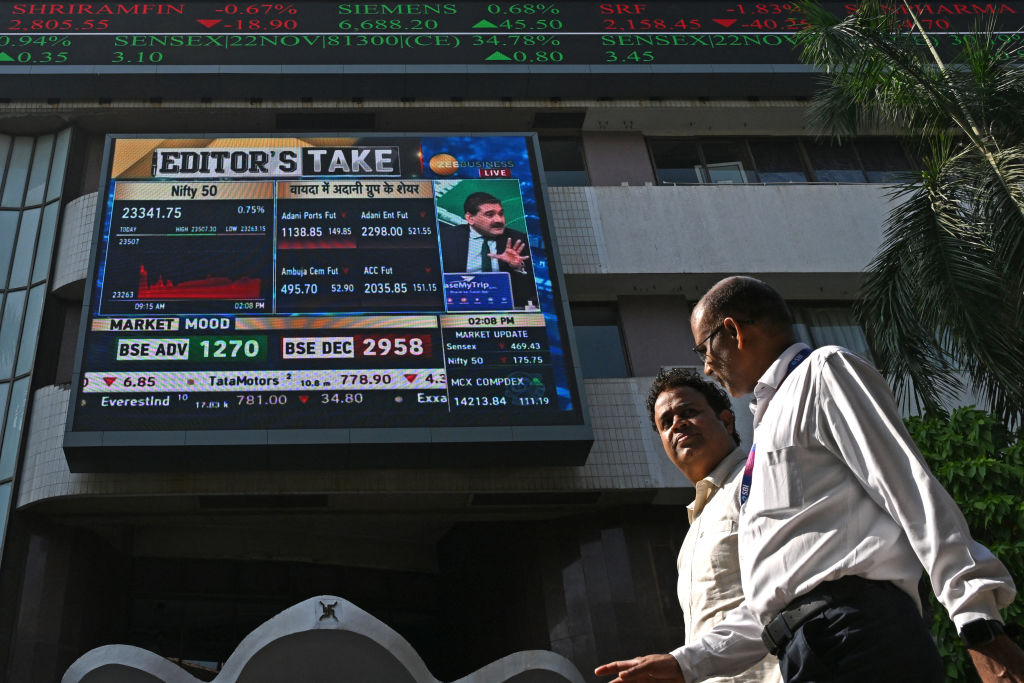
India has the potential to emulate China. It has already become the fifth largest economy and is on the verge of surpassing both Japan and Germany by 2027 to become the third largest. India is also now the fastest growing major economy, and in spite of the current slowdown it will still grow faster than China and the developed nations in the immediate future. But there are serious questions about India’s ability to become like China or replace China as the growth engine of the world economy. It lags behind in manufacturing, and while its current growth rate of 6.5 to 7% is the fastest, it is not fast enough to enable India to escape the middle-income trap.
India’s 30-year trend of 6.5% growth per annum in real dollars has made it the fastest-growing major economy. India’s average annual growth rate from 2001 to 2020 (including the global financial crisis and the COVID-19 pandemic) in current dollars had been 10.2% per annum. While the “China Story” is about investment and manufacturing-driven rise, the “India Story” is about infrastructure development growth and rapid growth in IT-based services.
India’s current GDP of $4.27 trillion is comparable to China’s GDP of $4.5 trillion in 2008. China became the second country to cross the $10 trillion mark in 2014. India, if it grows at the current rate will reach that mark by 2038. India’s growth vision of “Viksit Bharat” (developed India) is targeting developed nation status by 2047. India now is a low middle income developing economy.
Hurdles to Viksit Bharat
India’s persistent trade deficits stem structurally from being a net importer of commodities and capital goods. Since the global financial crisis, the Indian rupee has depreciated by 100%. Yet improving India’s balance of payments made the rupee the least volatile emerging market currency in the last decade. India’s exports of services are growing twice the global rate, the foreign direct investment stock has touched $1 trillion, and remittances of $129 billion are the highest ever in the world.
India has historically seen inflation in the high single digits due to supply-side bottlenecks. Since 2015, the RBI’s inflation targeting of 4% has accreted wealth of $9.7 trillion for 100 million households. Thanks to the Fiscal Responsibility and Budget Management Act, India was the only major economy to reduce the general government fiscal-deficit-to-GDP percentage between the global financial crisis and the pandemic. India may phase out primary deficit in the next four years, as the general government debt-to-GDP percentage has tapered from 88.4% in 2020 to 83.6% in 2024.
Democratic Dividend for the Masses
India’s improved economy and tax revenues, combined with digitization of financial transactions, have made direct cash transfer from government to even the poorest of the poor just a few key strokes away. In the past few years, elections are lost and won based on promises of welfare schemes. The parties are promising financial benefits and delivering them via direct transfers. The financial inclusion of 310 million unbanked poor through the Jan Dhan-Aadhaar-Mobile Trinity has enabled governments to do targeted transfers, reducing extreme poverty to just 2.2%.
Democracy is India’s strength but also its weakness. Many of India’s economic policies are coming out of need to win the vote of a particular caste or ethnic community and may not necessarily be in the short- or long-term national interest. But in order to win elections, political parties are making promises that disrupt strategic planning. China, on the other hand, was able to make its plans and stick to them and record much higher rates of growth for much longer periods of time. Democracy is one reason why India is not the next China.
Net Assessment
The Indian economy is roughly two decades behind China in development. India has a geographical advantage in integrating with the global value chains as it overlooks major sea routes in the Indian Ocean region, home to some of the fastest-growing economies. The “India Story” is indeed remarkable: nearly half a billion people lifted out of abject poverty, rapid growth of the economy to the top tiers, advancement in science and technology, and expansion in global trade and diplomatic influence. India is undoubtedly a rising world power. It will grow steadily and remain democratic, and while it will not become the next China, it will become a new India.
Pedestrians walk past a digital broadcast on the facade of Bombay Stock Exchange (BSE) in Mumbai on Nov. 21, 2024. (Photo by INDRANIL MUKHERJEE/AFP via Getty Images)





